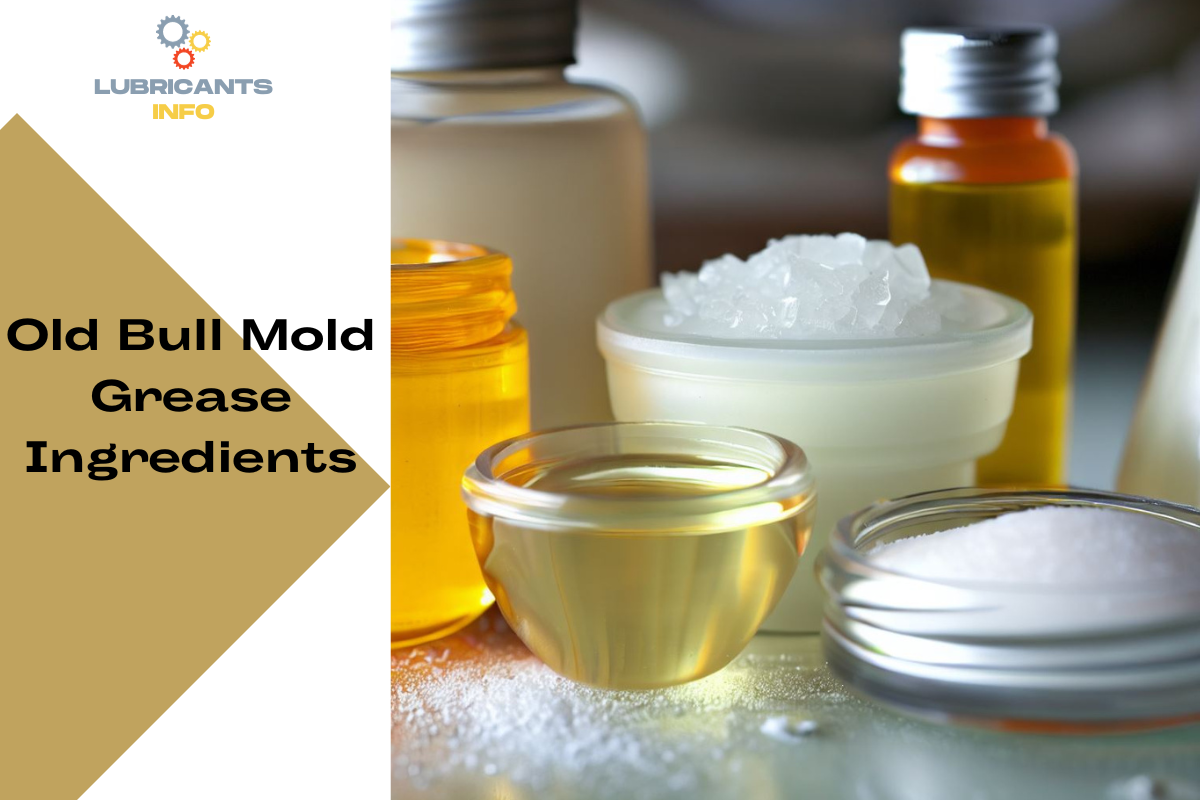Have you ever been curious about products used in industries, like Old Bull Mold Grease? In this blog post, we’ll take a closer look at what makes this product unique. We’ll uncover its ingredients, present a summary table, and make sure the information is simple to grasp and a pleasure to read.
The Ingredients of Old Bull Mold Grease
Old Bull Mold Grease is a specialized lubricant used in various industrial applications, including the maintenance and protection of molds used in manufacturing processes. While it may sound like a complex mixture, it’s important to note that Old Bull Mold Grease is designed to be effective while keeping the ingredient list concise.
Let’s take a closer look at the key ingredients:
| Ingredient | Purpose |
| Petroleum Jelly | Provides lubrication and moisture resistance |
| Mineral Oil | Enhances lubricity |
| Calcium Stearate | Thickening agent |
| Zinc Oxide | Improves resistance to high temperatures |
Now, Let’s get started with each ingredient to better understand its role in Old Bull Mold Grease.
- Petroleum Jelly: This is the primary base of Old Bull Mold Grease. It’s well-known for its lubricating properties and its ability to repel moisture. In the world of industrial lubricants, moisture resistance is crucial to prevent mold corrosion and degradation.
- Mineral Oil: Mineral oil is used to enhance lubricity, ensuring that the product can be applied smoothly and evenly. It also helps in reducing friction, which is essential for molds operating in high-stress conditions.
- Calcium Stearate: This ingredient serves as a thickening agent, giving Old Bull Mold Grease its desired consistency. It ensures that the product adheres effectively to the mold’s surfaces, providing long-lasting protection.
- Zinc Oxide: Zinc oxide is added to improve the grease’s resistance to high temperatures. In industrial settings, molds can be subjected to extreme heat, and zinc oxide helps maintain the product’s integrity under such conditions.
Why These Ingredients Matter
Now that we know the ingredients, let’s understand why they matter in the context of Old Bull Mold Grease.
- Efficiency: The carefully selected ingredients ensure that the grease operates efficiently, extending the lifespan of molds and preventing costly downtime for replacements or repairs.
- Versatility: Old Bull Mold Grease’s composition makes it suitable for a wide range of applications, from food processing to automotive manufacturing, where molds play a vital role.
- Longevity: The combination of petroleum jelly, mineral oil, calcium stearate, and zinc oxide means that this grease can protect molds for extended periods, reducing the frequency of reapplication.
- Resistance: The moisture resistance, temperature stability, and friction-reducing properties of these ingredients are essential in preventing mold damage and maintaining product quality.
Conclusion
In conclusion, Old Bull Mold Grease may have a concise list of ingredients, but each plays a critical role in ensuring the longevity and efficiency of molds in various industries. From moisture resistance to temperature stability, this grease has been formulated to provide top-notch performance.
Remember, the quality of your mold maintenance products can significantly impact your production processes. Choosing the right lubricant, like Old Bull Mold Grease, can make a world of difference in your industrial operations.
So, the next time you encounter Old Bull Mold Grease, you’ll have a deeper understanding of what makes it tick, helping you appreciate its value in the world of manufacturing.
Frequently Asked Questions
-
What is Old Bull Mold Grease made of?
Old Bull Mold Grease primarily consists of petroleum jelly, mineral oil, calcium stearate, and zinc oxide. These ingredients work together to provide lubrication and protect molds in various industries.
-
Why is petroleum jelly used in Old Bull Mold Grease?
Petroleum jelly is included in the formula for its lubricating properties and moisture resistance. It helps prevent mold corrosion and ensures smooth operation.
-
What role does mineral oil play in Old Bull Mold Grease?
Mineral oil enhances lubricity, reducing friction between mold components. This is crucial for molds operating under high-stress conditions.
-
Why is calcium stearate added to the grease?
Calcium stearate serves as a thickening agent, giving Old Bull Mold Grease its desired consistency. It ensures the product adheres effectively to mold surfaces, providing long-lasting protection.
-
How does zinc oxide benefit Old Bull Mold Grease?
Zinc oxide improves the grease’s resistance to high temperatures. This is essential in industrial settings where molds may be subjected to extreme heat, ensuring the product’s stability.

